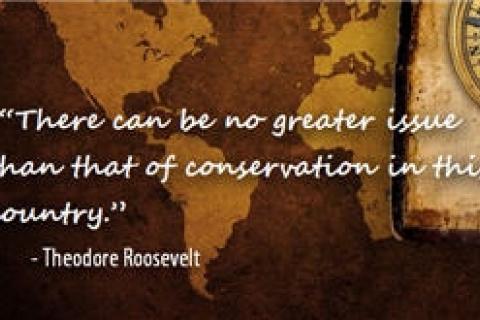
North American hunters devised a system over 150 years ago which insures that wildlife thrives and is accessible to the masses. Every hunter should be acquainted with what is often referred to as the "Seven Sisters of Wildlife Conservation".
- The Public Trust — Most of America's colonial settlers rejected the European system where only the wealthy had access to wildlife. An 1842 Supreme Court decision (Martin vs. Waddell) established that wildlife resources are owned by no one and must be held in trust by government for the benefit of present and future generations. Canadian provinces followed the states and government agencies became the caretakers for the people's wildlife.
- Prohibitions on Commerce — Prior to the advent of refrigeration, stockyards and a transcontinental railroad, market hunters supplied restaurants with table fare. Beginning in the latter half of the 1800's, the sale of wildlife was prohibited to ensure the sustainability of wildlife populations.
- Democratic Rule of Law — The elimination of commerce in wildlife and an open, democratic process makes it possible to give the masses access to wildlife. It also prevents any elite class of landowners from controlling wildlife law, and enables wildlife to be managed by scientific principles.
- Hunting Opportunity for All — Open access to wildlife drives the North American model. Public participation, where everyone has the right to hunt and fish, makes wildlife valuable to everyone. Other models — where land ownership and social class limit who may hunt — prevent ordinary people from having access to wildlife and make wildlife valuable to only a few.
- Non-Frivolous Use — Anyone who would take any animal must have a reason, so guidelines for appropriate use of animals were established and licenses are issued to permit killing for food and fur. Laws also allow killing for self-defense and defense of property. These categories prevent killing for the sake of killing and killing to acquire such things as decorative feathers.
- International Resources — Since wildlife and fish can freely cross national and state boundaries, they are considered an international resource. Broad cooperation is critical for the model to work — that's why it's called the North American model and not the United States model.
- Scientific Management — Wildlife management must be based on the best available science. This practice goes all the way back to the earliest American expedition where explorers recorded the diversity of species they came across a they charted the continent. Hunters and fishermen are themselves amateur naturalists who study the animals and their habitat as part of their normal pursuit.
Hunters raise millions of dollars each year for wildfire agencies to go towards scientific study so that all species can be sustained in perpetuity.
When wildlife agencies set laws, classifies animals, creates seasons, establishes enforcement policies, protects habitat for game and non-game animals alike, the "Seven Sisters" are essential to their decisions.
Hunters support all of the "Sister" principles. They continue to be the foundation which ensures that wildlife populations thrive and that all people have access to those resources.
- 7359 views

